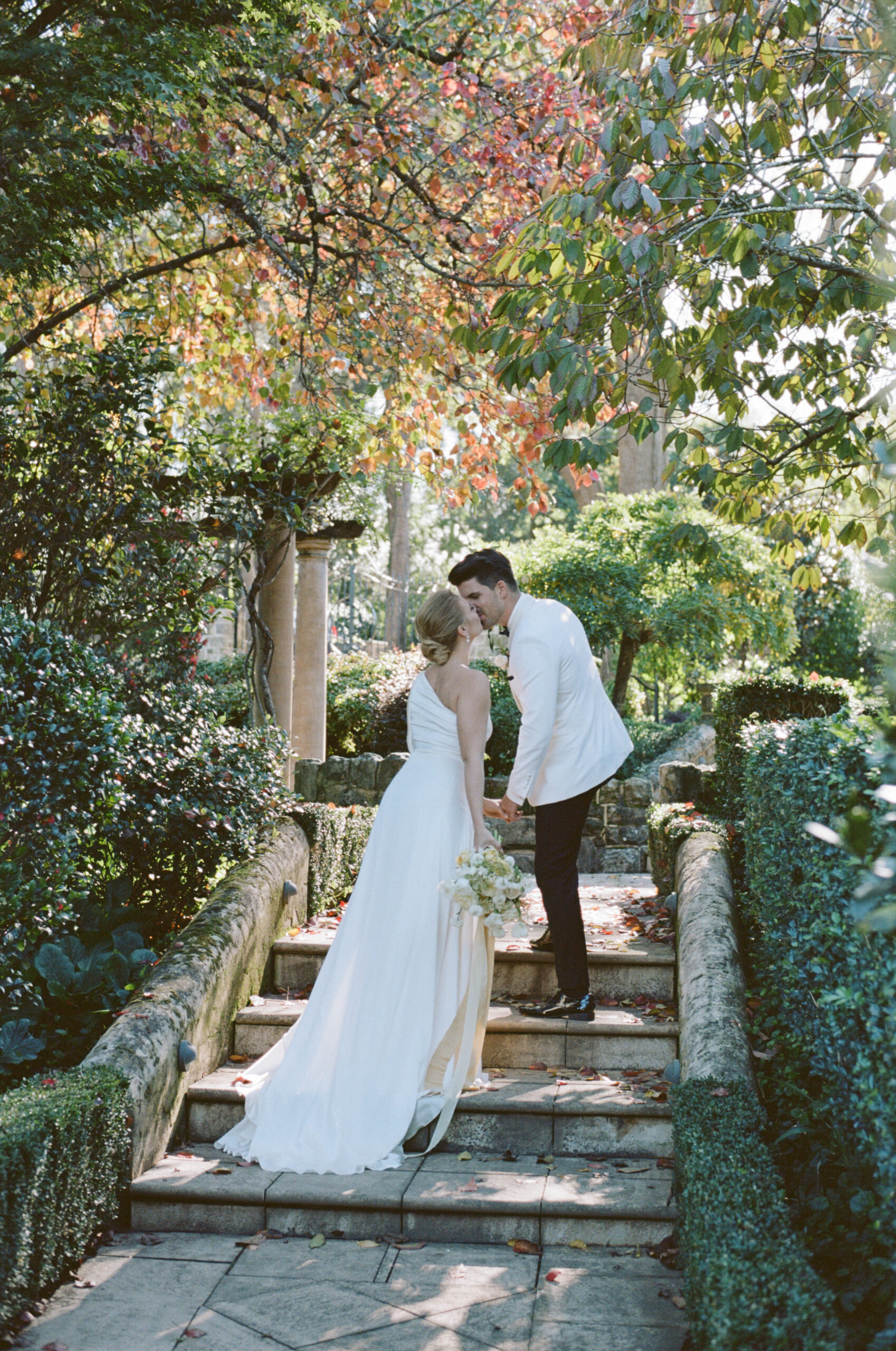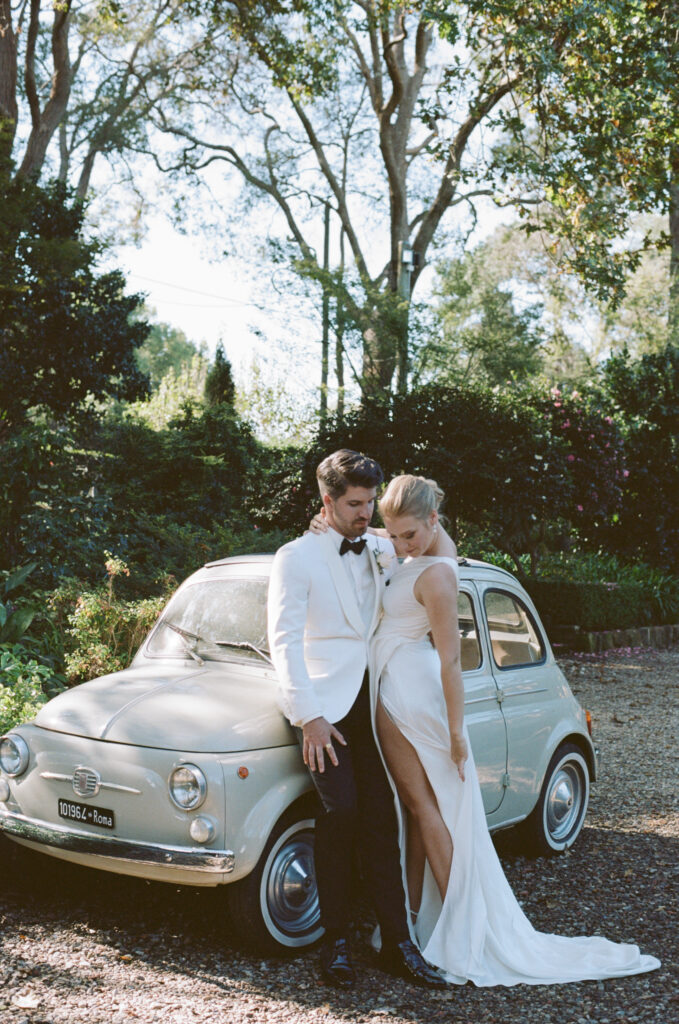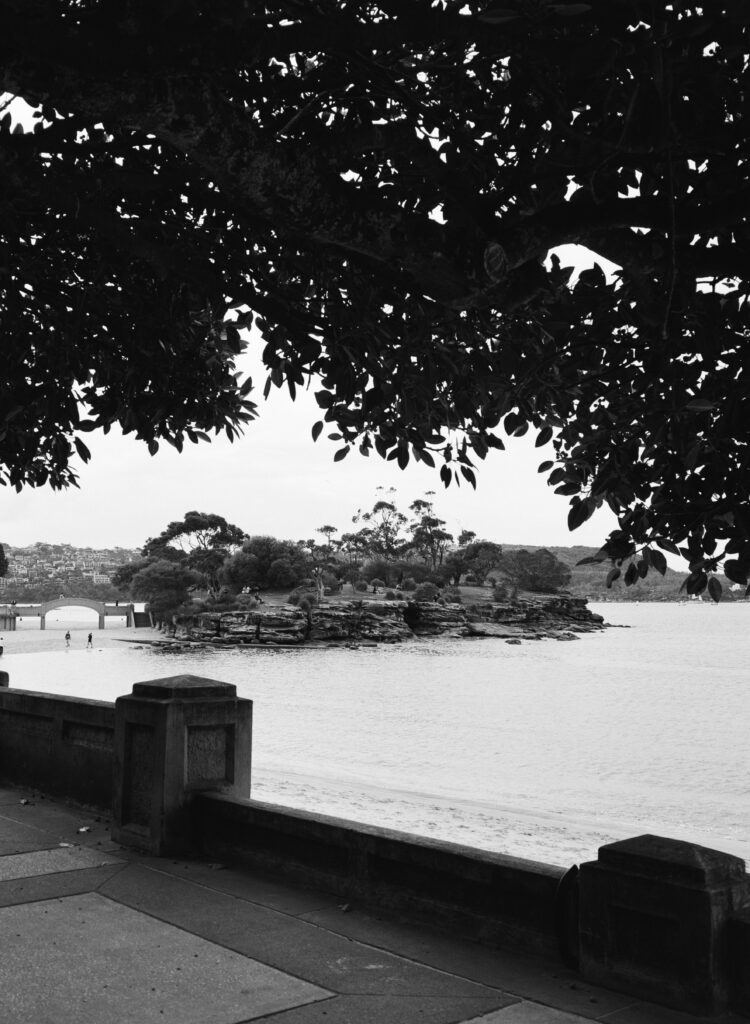
Analogue Film For Your Wedding Photography
WRITTEN BY:
Claire Parrett
September 5, 2023
WHY I OFFER HYBRID FILM AND DIGITAL WEDDING PHOTOGRAPHY
The perfect imperfections and timeless colours of analogue film photography have re-captivated us in recent times with a big resurgence. It become so sought after that most weddings I photograph now are adding film to their package. Combining analogue film and digital photography for wedding photography takes the advantages of both and creates timeless and dynamic photo galleries.

WHAT IS SO SPECIAL ABOUT ANALOGUE FILM?
So, what is it about film that’s so special? To answer that question is like trying to describe the painting in the art gallery that your eye instantly found. The one you can’t quite define what it is about that painting that draws you in and holds your attention.
Analogue film photography has a distinctive quality that just can’t be replicated by digital cameras. The softness, rich tones and subtle grain of film photography lends a certain magic to wedding photographs. There is undoubtedly a sense of the nostalgic and old-fashioned romance. Like looking through photos taken by your grandparents on holiday 60 years ago. Their natural grain brings a depth to film images while also adding a soft, ethereal, dreamlike quality to each frame. I have found those who share a love of film photography, embrace the imperfections that come with the craft. They are not seen as flaws that mark the image or the memory it represents. Using flash with film gives a high contrast, punchy, high-fashion look to the photographs creating an editorial vibe. When used with colour film, the colours become beautifully saturated.
WHAT ANALOGUE FILM STOCKS DO I USE?
For weddings, one of my favourite analogue film stocks will always be Kodak’s Portra 400. The way it captures skin tones gives that classic, timeless look to wedding photos that doesn’t fall prey to trends. But is there anything more classic than black and white in photography? Although I definitely see a world in colour, I enjoy the simplicity of black and white photography. Sometimes the story in a photo is told better in black and white, without the distraction of colour. My favourite black and white film stocks are Tri-X 400 and Ilford HP5.

Balmoral Beach, Sydney on Tri-X 400
SLOWING DOWN FOR THE FILM
Analogue film photography encourages me to have a deliberate and mindful approach in a way digital photography doesn’t. With a limited number of exposures per roll, these cameras are an exercise in patience and precision. Each photo is carefully considered before pressing the shutter. This intentionality really fosters a deeper connection between my camera and the subject. It encourages me to slow down and approach photographing a wedding in a more contemplative pace. Digital cameras give us the freedom to capture a large number of photos and at a faster rate. This definitely has an important place in photographing weddings. Using a hybrid format has allowed me to take advantage of the different strengths of both film and digital photography.
MY ANALOGUE FILM CAMERAS
Where would I be without my collection of cameras? Let me introduce you to my analogue film cameras. My most recent addition is a medium format 645 which I know is going to become a favourite for weddings. This has a higher resolution than standard 35mm film however this also means less frames in a roll. I use this camera for the bigger moments during the day that I think you may want to have printed. For more documentary photography on a wedding day, I use my Nikon F4. This is a 35mm film camera which gives me 36 frames in a roll.
DEVELOPING THE FILM
After the wedding I hand deliver the rolls of film to my local film lab to have them developed. The lab then takes the negatives and using a Noritsu scanner, the photos are scanned into a high-resolution digital photo. I have them scanned into a high resolution photo so we can have freedom in how they’re used. We’re then able to use them for larger scale printing or in your wedding album. When the scans are delivered to me I make some slight corrections. These are very minimal because I want to keep that character of the analogue film. Your film photos are then added in with all of your digital photographs to be viewed as one cohesive gallery.
TO FINISH…
If you’ve never thought about combining analogue film photography with your digital photography let me leave you with this. They complement each other beautifully and is an added touch of luxury when put together in a wedding album.
For limited film photography coverage, I photograph it myself. Larger analogue film photography includes an additional photographer so equal attention is given to both. You have choice between the higher resolution medium format film or the standard 35mm film. Or you may choose a combination of both. The medium format film gives a smaller amount (16) of higher resolution photos. This is perfect for more key parts of your wedding day such as your portraits. 35mm film photography gives us 36 frames which is great for using across the other parts of your wedding day. You will also be able to choose colour, black and white or a combination of both.
If you’re interested in adding analogue film to your wedding photography, please get in touch.
Claire x
For more wedding photography inspiration, head to my Pinterest page. https://www.pinterest.com.au/stateofdawn/
Film and camera store in Sydney: https://www.sydneysuper8.com.au/
Leave a Reply